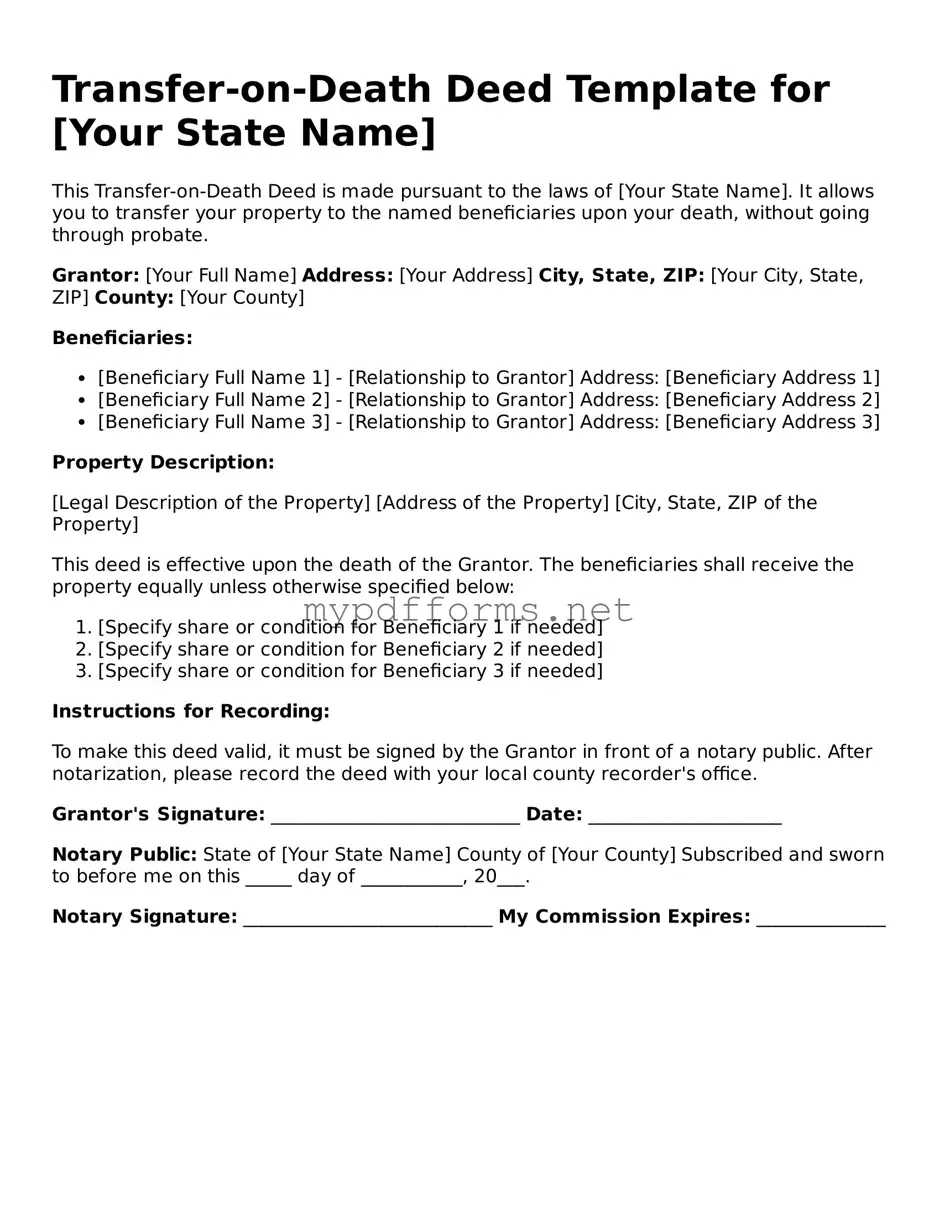The Transfer-on-Death (TOD) Deed is a unique legal instrument that allows property owners to transfer their real estate to beneficiaries without the need for probate. This document shares similarities with a Last Will and Testament, which also outlines how a person's assets should be distributed upon their death. However, unlike a will, which becomes effective only after death and requires probate, a TOD Deed allows for an automatic transfer of property to the designated beneficiaries as soon as the owner passes away. This simplicity can help avoid the complexities and delays often associated with the probate process.
Another document akin to the TOD Deed is a Living Trust. A Living Trust is established during a person's lifetime and allows for the management and distribution of assets while the individual is still alive and after their death. Like a TOD Deed, a Living Trust can help bypass probate, ensuring that the assets are distributed quickly and privately. However, a Living Trust typically requires more management and may involve ongoing administrative responsibilities, while a TOD Deed is more straightforward and limited to real estate transfer.
The Texas Motorcycle Bill of Sale form is a crucial document that legally records the sale and purchase of a motorcycle within the state of Texas. It serves as a proof of transaction between the buyer and seller, detailing the motorcycle's condition, price, and identifying information. This form not only establishes ownership but also ensures a smooth transfer of the title from one party to another, and a blank form is here for those in need.
The Beneficiary Designation form is another similar document, often used for financial accounts such as bank accounts, retirement plans, or life insurance policies. This form allows individuals to name beneficiaries who will receive these assets directly upon their death, bypassing probate. While the TOD Deed specifically pertains to real estate, the underlying principle of direct transfer to beneficiaries is a common thread between these two documents. Both instruments aim to simplify the process of asset distribution and provide clarity on the owner’s intentions.
A Joint Tenancy Agreement also bears resemblance to a TOD Deed. In a joint tenancy arrangement, two or more individuals hold ownership of a property together, and upon the death of one owner, the property automatically transfers to the surviving owner(s). This right of survivorship feature is similar to the immediate transfer provided by a TOD Deed. However, joint tenancy typically involves shared ownership during the owner's lifetime, whereas a TOD Deed allows for a singular ownership that transitions to designated beneficiaries upon death.
Lastly, a Power of Attorney (POA) can be compared to a TOD Deed in terms of its role in asset management. While a TOD Deed specifically addresses the transfer of real estate after death, a POA allows an individual to designate someone to manage their financial affairs while they are alive but unable to do so themselves. Both documents empower individuals to control how their assets are handled, but they serve different purposes and timelines. The POA is about management during life, while the TOD Deed focuses on posthumous asset transfer.
